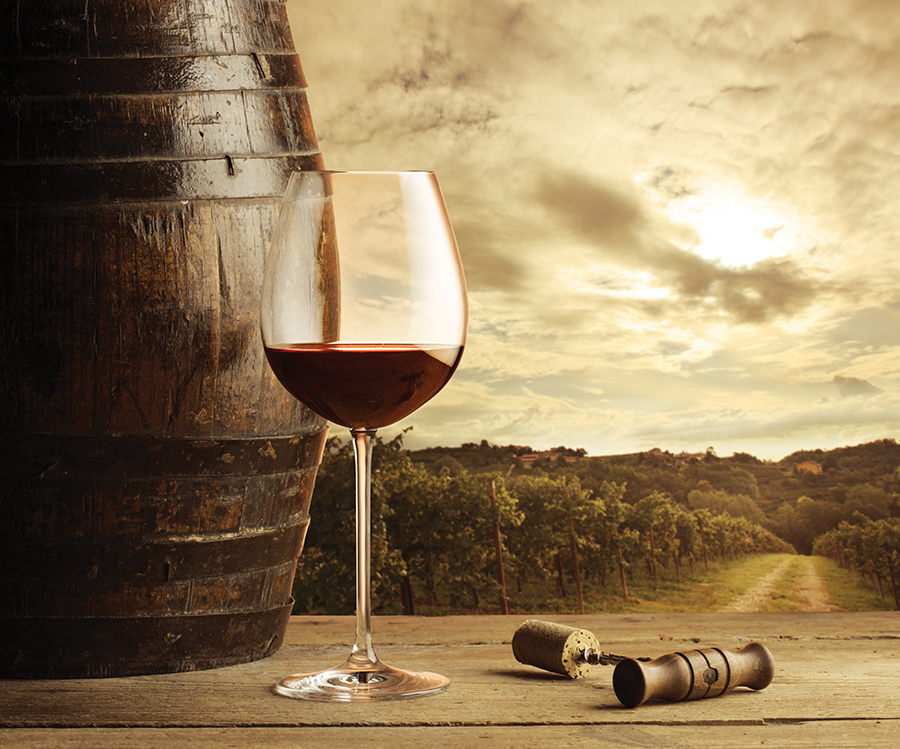By Matthew DeBord
HQ 81 | SPRING 2013
Italy is the wine world’s underachiever. For decades, it labored in the considerable shadow of France, the undisputed king of wine, until the 1970s, when upstart California burst onto the scene.
Italy even played second fiddle to Germany, whose sweetish white wines were for years favored over those of the people of the famous Mediterranean boot.
That’s all changed in the past few decades, as Italian food has become enormously popular and the country’s winemaking culture has grown increasingly sophisticated and international.
Italy is far better known for red wines than whites, so it’s ironic that a white was its first big global success: Pinot Grigio. A simple wine that hails from the area around Venice in Italy’s North, Pinot Grigio had a name that was easy to pronounce and a flavor profile that was better suited to the lighter cuisines of the 1990s and 2000s than Chardonnay.
But Pinot Grigio was just the beachhead. Connoisseurs had always understood that Italy produced two world-class wines, to rival the best that France had to offer. Barolo came from the northern region of Piedmont and served as Italy’s Burgundy – a lighter red that nonetheless packed a powerful punch and could age for decades. I’ve drunk older Barolos that are almost hypnotic in their complexity but that have turned an almost brick-brown in color.
Brunello was (and still is) from Italy’s central region, Tuscany. This big, bold style of red wine counters French Bordeaux and grew out of the robust cuisine of the region. In Piedmont, you’re above what Italians call the “butter belt” – the food there is cooked with butter rather than olive oil. In Tuscany, you find food prepared with some of the finest olive oil in the world – and that olive oil is produced by some of the same winemakers who produce Brunello.
For a long time, Barolo and Brunello were the power couple of Italian wine. But outside Italy, they were fairly obscure. Then a new generation of winemakers began to emerge in the country in the 1970s. They saw a country with restrictive wine laws – only certain types of grapes could go into most wines. But one category, a broad one devoted to “table wines,” wasn’t restrictive at all.
This was because Italians drink a lot of wine, and most of it is basic, everyday stuff. To slake this national thirst, countless agricultural collectives and bulk wine producers crank out table wines that, on the whole, are pretty undistinguished. But in the 1970s, ambitious winemakers in Tuscany decided that they could make wines under the table wine classification that were more modern in style. And so the Super Tuscans were born. The first was called Tignanello, created by a hugely influential Italian nobleman named Piero Antinori whose family had been in the wine business for over a century. Others, with names like Sassicaia and Ornellaia, followed.
By dodging the Italian wine laws and using grape varieties like Cabernet Sauvignon and Merlot, the Super Tuscans created a whole new category of Italian wines and set off a flurry of innovation.
Soon, Italian winemaking regions that had been almost totally ignored for a hundred years – many of them in southern Italy – began to produce bottlings that could hang with California, France and Australia for quality. The Italian section in wine stores grew rapidly. And a whole new range of fairly affordable, high-quality Italian wines began to show up on restaurant wine lists.
The good old “fiasco” basket bottle that had held the Chianti that accompanied a thousand spaghetti dinners was succeeded by a passel of delicious Chiantis and Chianti Classicos that reintroduced diners and wine lovers to the offbeat Sangiovese grape. A wine list that in 1980 might have included a house red and a house white morphed into a list that included a Super Tuscan or two, some Brunellos and Barolos and a host of less expensive wines from Sicily and Puglia.
For diners in Huntington, the wine list at Rocco’s Ristorante is a case in point. It features two of the most famous Italian wines in the world, Sassicaia and Banfi’s Brunello, alongside some excellent Chianti and Barolos. There’s even a selection of Amarones, an unusual northern Italian red wine made from grapes that have been dried first. Amarones are rich, chocolaty and almost sweet, dense and darkly concentrated. If you’ve never had one, you owe it to yourself to pull a cork.
In about 30 years, Italy went from being the wine world’s great underachiever to being preferable, in the minds of many, to France. Italy’s wines are more accessible and more modern in style now – it’s like the California of Europe. The tremendous popularity of Italian food, and the decline for French cuisine, has helped Italy’s wine industry to grow. But ultimately, it couldn’t have happened without many Italian winemakers simultaneously deciding to drag their country into the late 20th century’s wine revolution.





